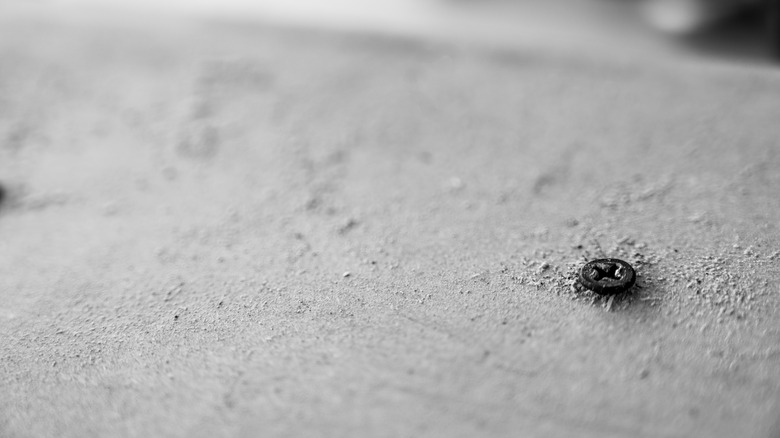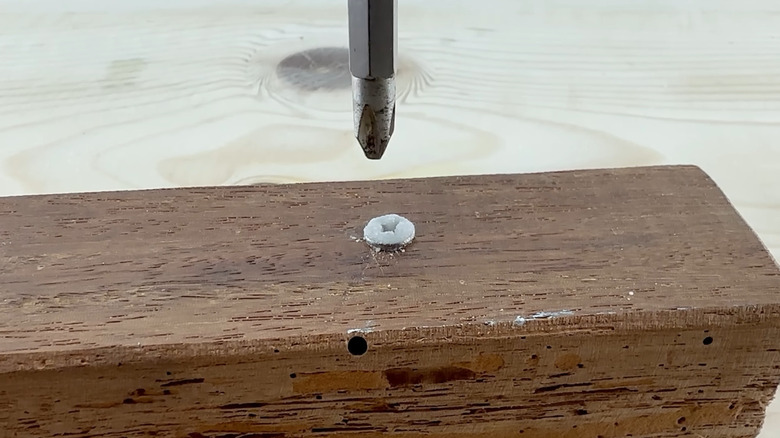If You Ever Had Trouble Removing A Screw, Try This Clever Baking Soda Hack
A stripped screw never seems to enter your life when you have time to deal with it. And the time it takes for many solutions — finding the tools to cut a channel for a slotted screwdriver, remembering which end of an extractor to use first, tracking down a rubber band — just adds to the frustration. But you probably have two ingredients handy that can quickly and thoroughly solve the problem in most cases: cyanoacrylate glue (CA glue, or super glue) and baking soda (aka sodium bicarbonate). You can use these two chemicals to rebuild the screw's damaged head in mere seconds.
There are a number of great ways to remove a stripped screw, from purpose-built extractor kits to the application of abrasive powder to muscling it out with pliers. YouTuber @creationholic101 has a better idea. They essentially make a new head for a stripped Phillips-head screw by mounding baking soda on top, making an impression of the screwdriver tip, and then adding a drop of CA glue that cures in a few seconds. The end result? A perfectly molded drive so you can back the screw out.
Why this trick works, and other ways to use it
On its own, CA glue works well on steel (and on zinc, which is what most wood screws are coated with). But when combined with baking soda, it becomes something of a miracle product. It helps with the stripped screw in two ways. First, the baking soda acts as an accelerator to cure CA glue by speeding up the adhesive's drying time (in fact, you can make your own spray accelerant with baking soda and water). When baking soda is added to the mix, an exothermic reaction (i.e. one that releases heat) creates long polymer chains that are stronger than those produced by water and CA glue, or CA glue alone. This process is polymerization, a crosslinking of cyanoacrylate monomers, and while cyanoacrylate alone creates brittle bonds, polymerized bonds are quite strong.
So strong, in fact, that the combination of baking soda and CA glue can be used for all manner of purposes. It's commonly used as a filler material to fix knot holes in wood, rebuild rotted or chipped areas in other materials, and to mold replacement parts. It's even used to make field repairs to damaged propellers of lightweight aircraft. In their video, @creationholid101 uses the mix to bond pieces of plastic together, repair a chipped tabletop corner, cast a new head for a bolt to effectively create a knurled knob, and fill a screw hole — one of the quickest methods for repairing one.

